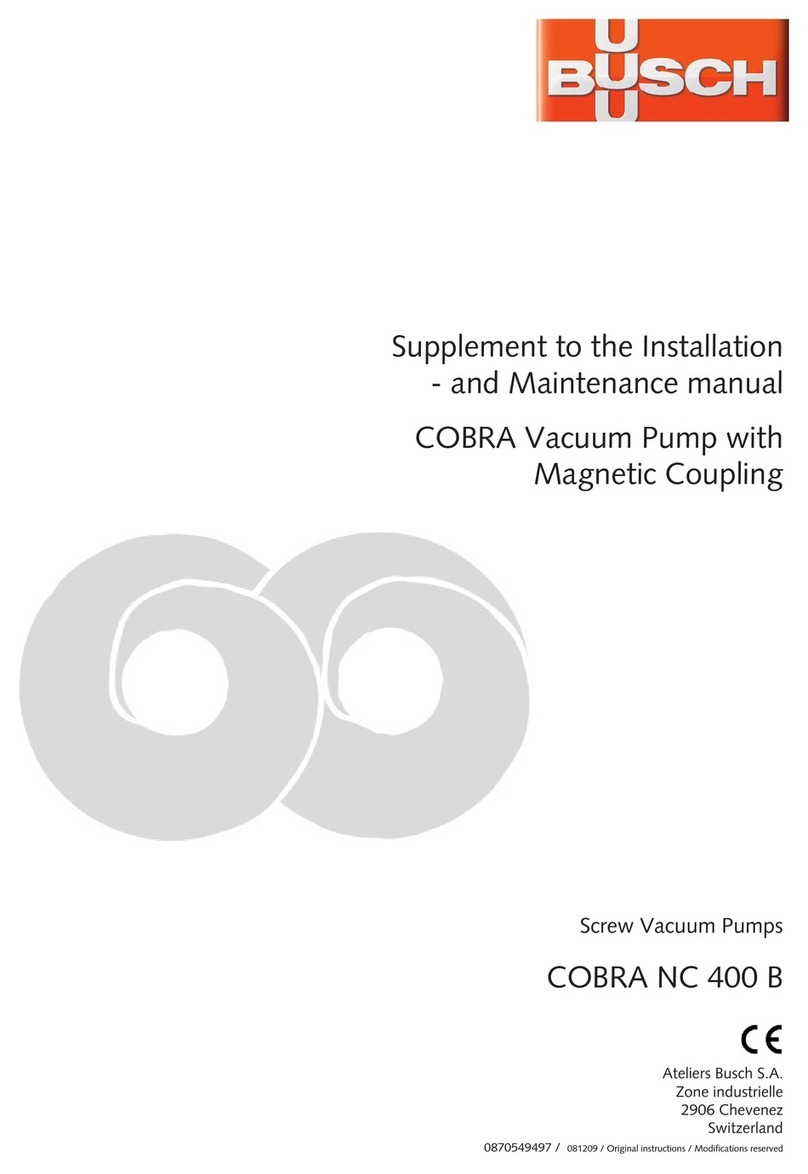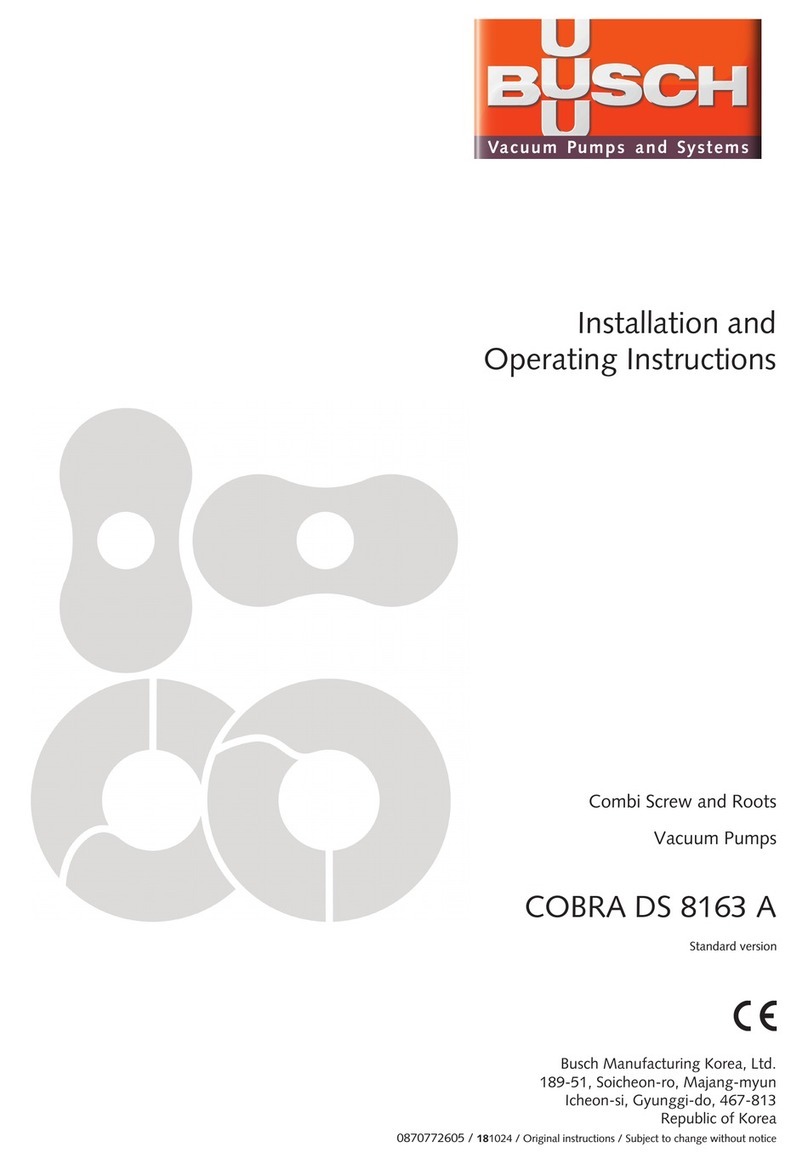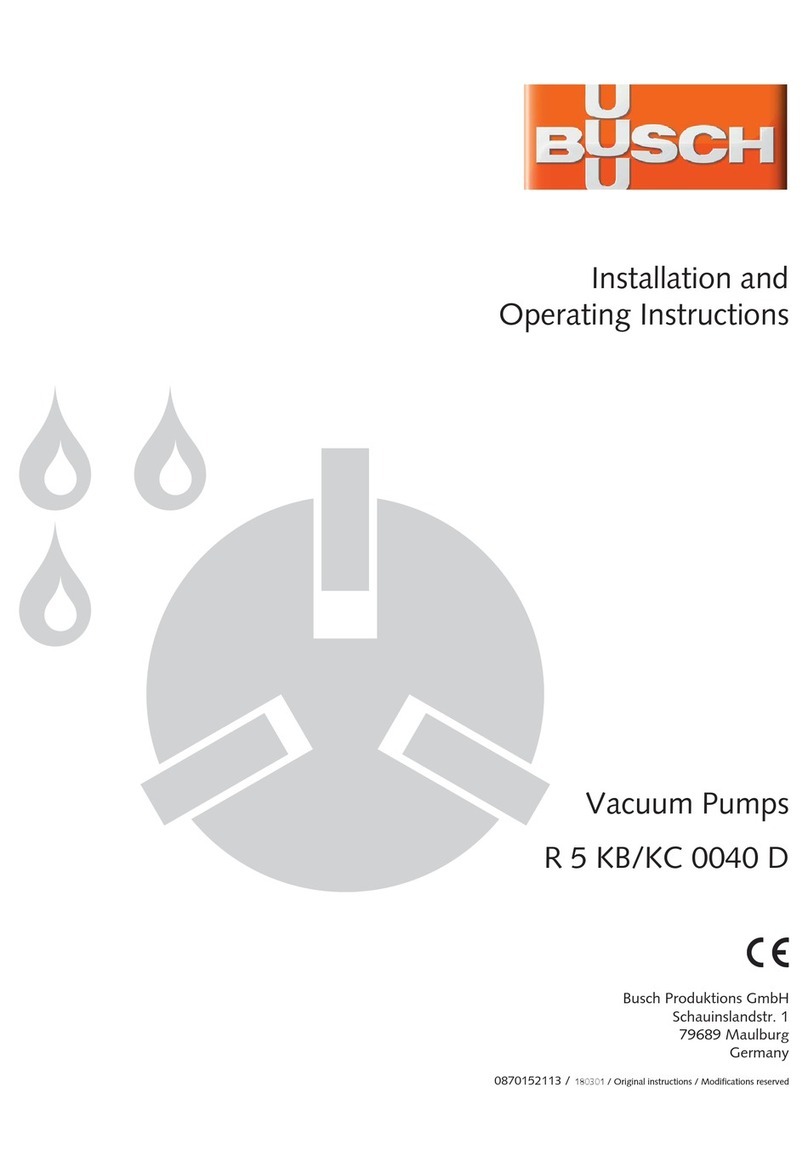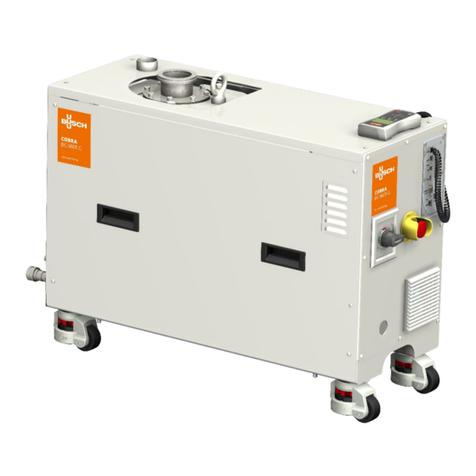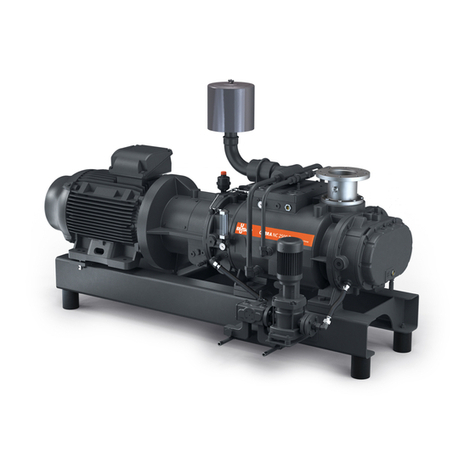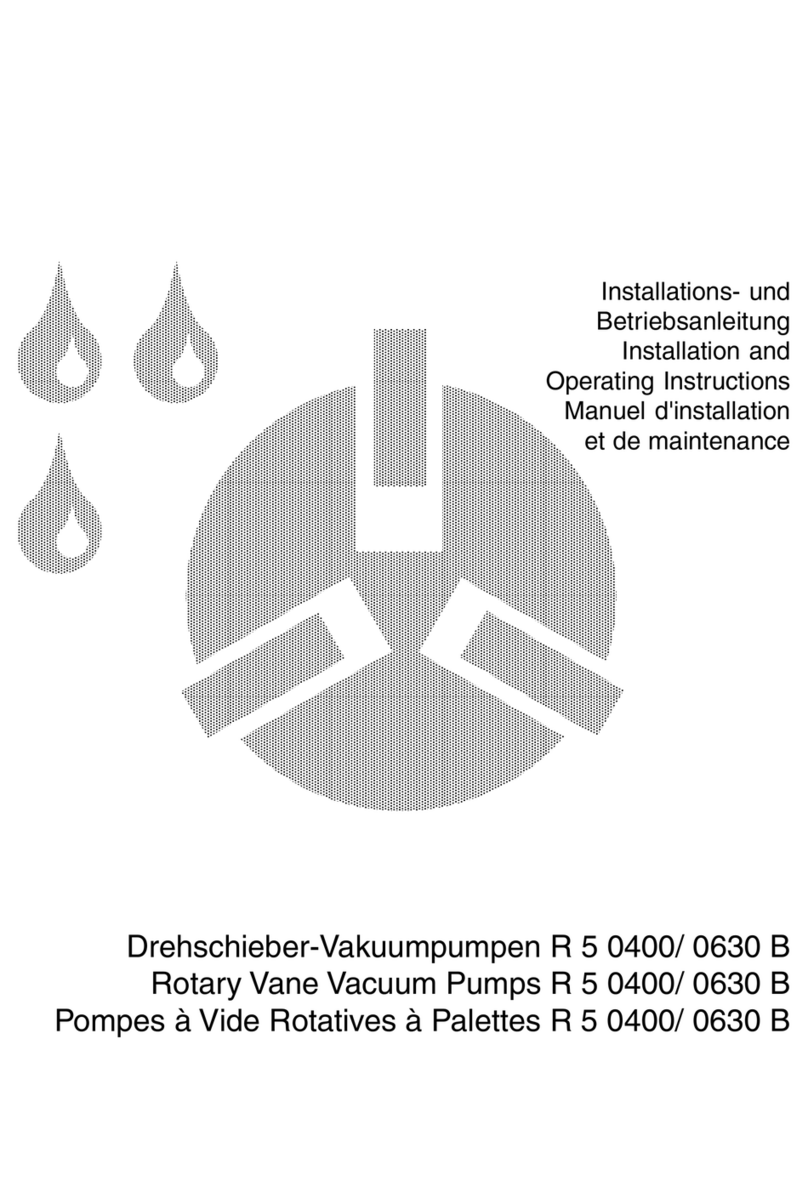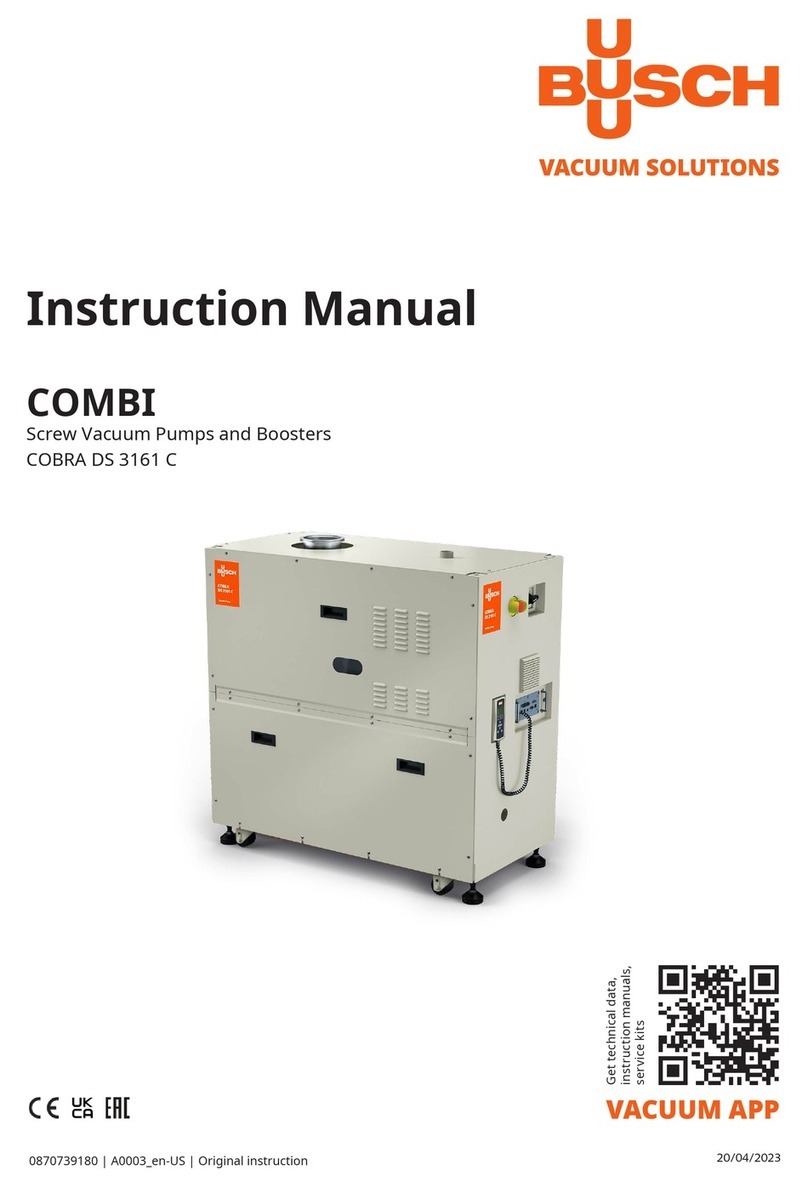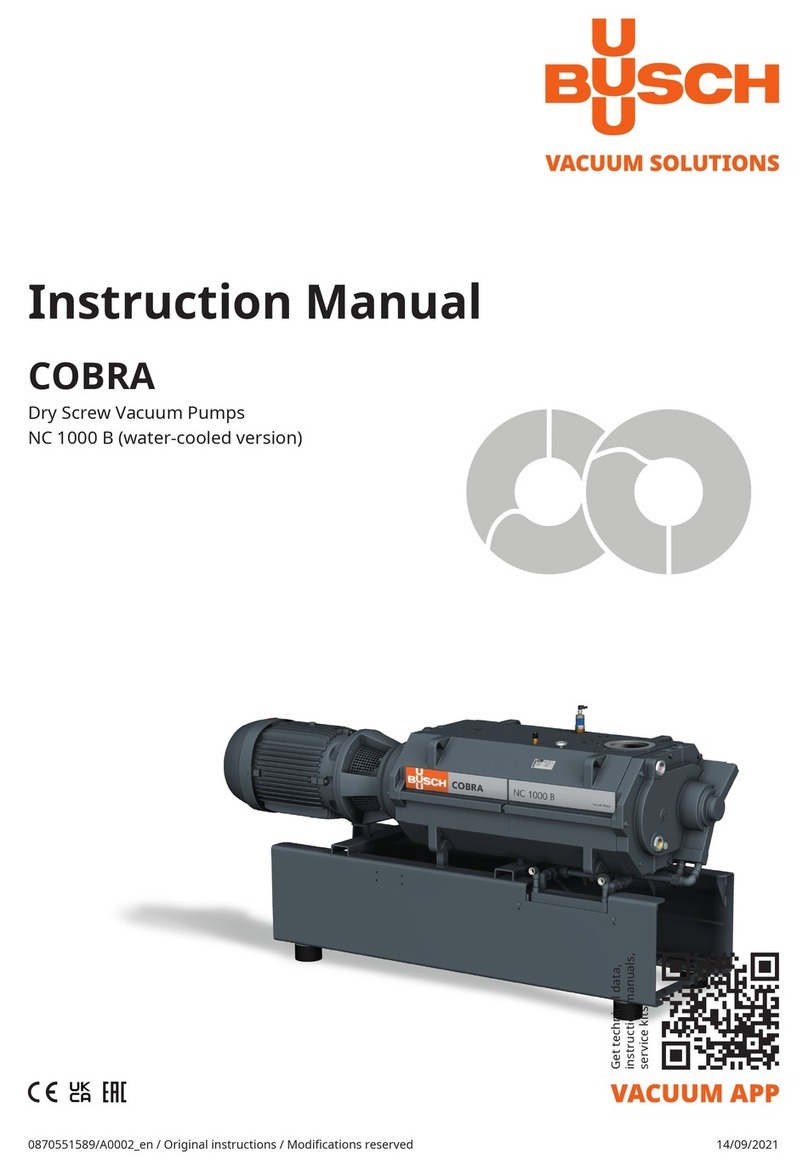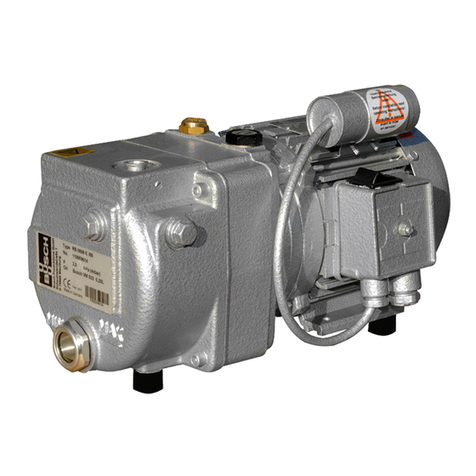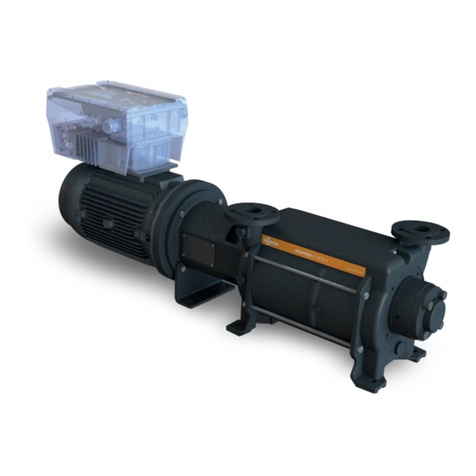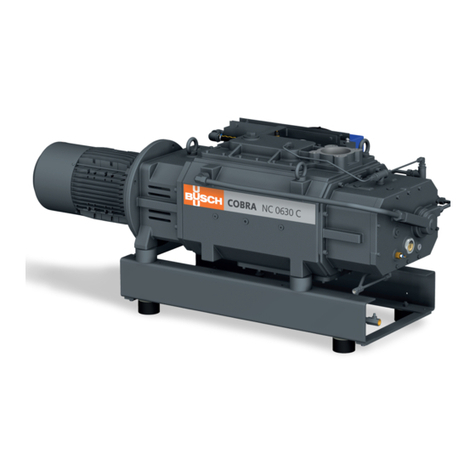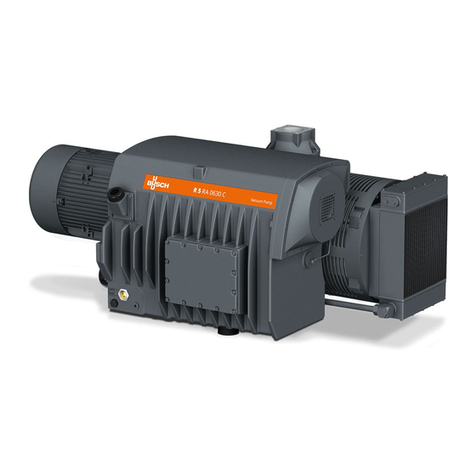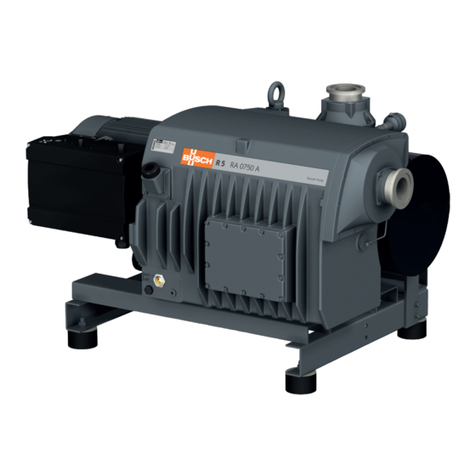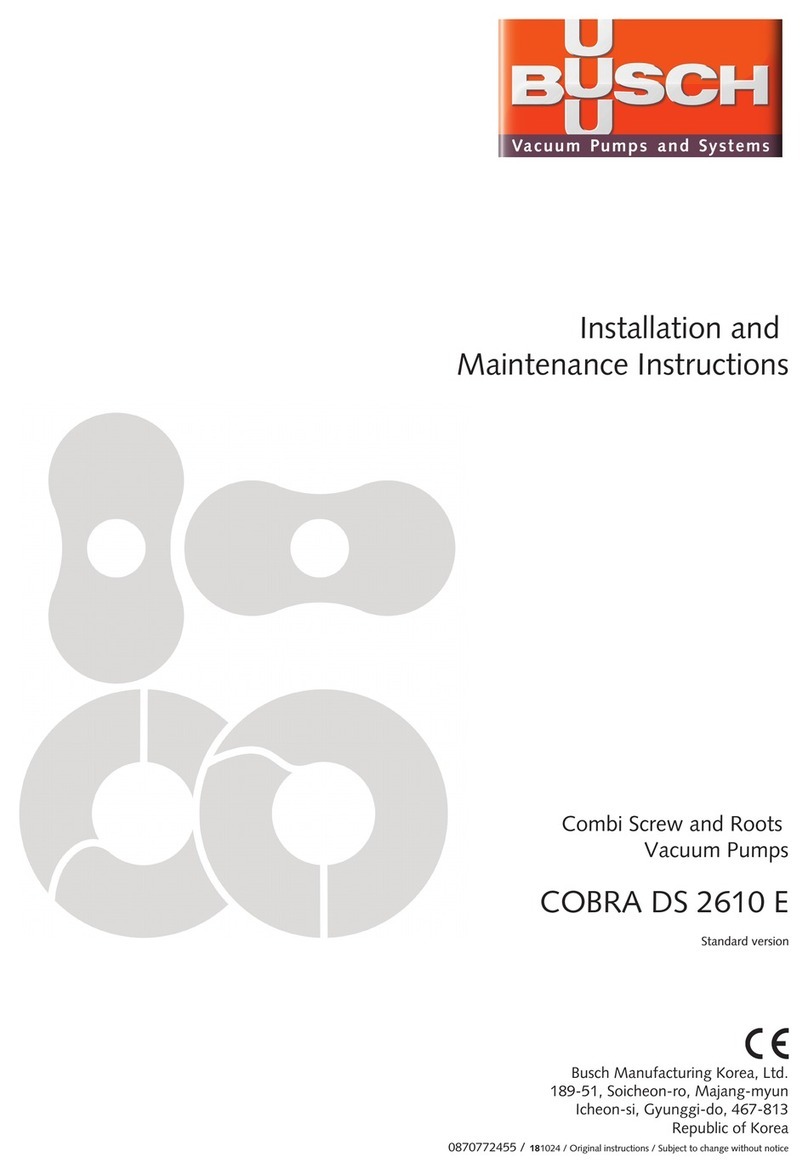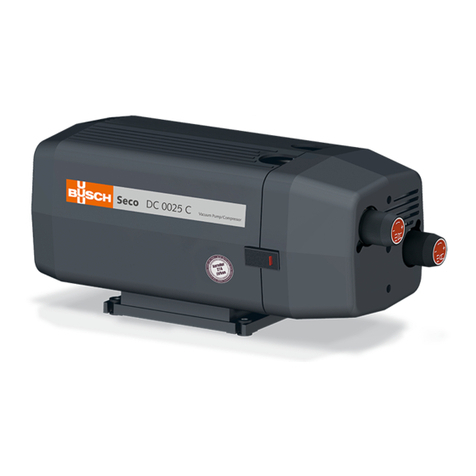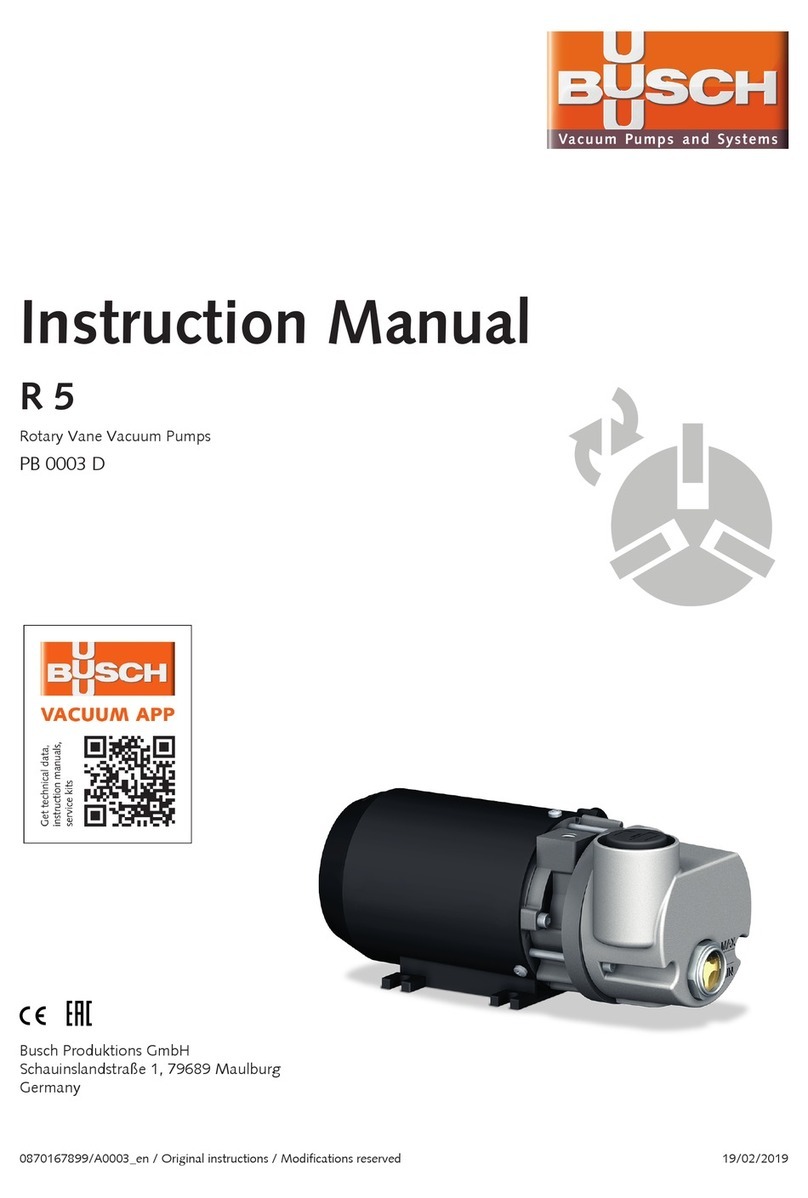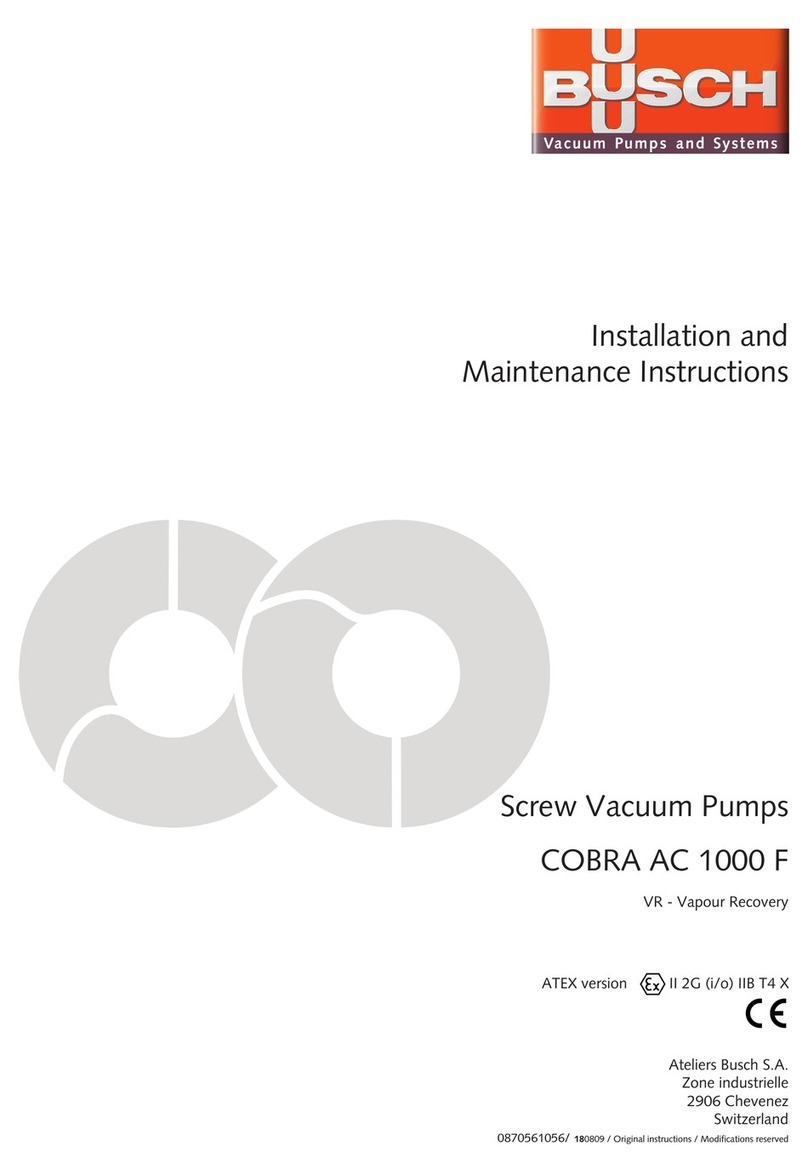
Operation Notes
Use
The vacuum pump is intended for
–the suction
of
–non-explosive gases and vapours
The vacuum pump may only be used as contractually agreed with
Busch. The conveyed medium, the operating liquid and the tempera-
ture ranges thereof may not be changed without written consent of
Busch.
The vacuum pump is intended for the placement in a non-potentially
explosive environment.
The vacuum pump is thermally suitable for continuous operation
(100 percent duty).
The vacuum pump is not ultimate pressure proof. Operation with a
closed (“blanked”) suction line will damage the vacuum pump.
CAUTION_ac
During operation the surface of the vacuum pump may reach tem-
peratures of more than 70 °C.
Risk of burns!
The vacuum pump shall be protected against contact during opera-
tion, it shall cool down prior to a required contact or heat protection
gloves shall be worn.
●Make sure that all provided covers, guards, hoods etc. remain
mounted
●Make sure that protective devices will not be disabled
●Make sure that cooling air inlets and outlets will not be covered or
obstructed and that the cooling air flow will not be affected ad-
versely in any other way
●Make sure that the installation prerequisites (Úpage 5: Installation
Prerequisites) are complied with and will remain complied with,
particularly that a sufficient cooling will be ensured
CAUTION_a
The shaft of the vacuum pump is sealed by means of a mechanical
seal.
Starting the vacuum pump without operating liquid will result in
mechanical seal failure.
Never start the vacuum pump without operating liquid.
Setting Operating Conditions
Selection of Operating Liquid
Water is usually used as operating liquid for the conveyance of air and
other inert gases. Other ring liquids may be used in order to comply
with the selected gases and separation methods.
The kinematic viscosity at operating temperature shall not exceed
2 mm²/s. Higher viscosities require increased drive power. The vapour
pressure of the ring fluid in case of vacuum operation shall not exceed
16 mbar. Higher vapour pressures deteriorate the suction capacity and
the ultimate pressure as stated in the performance tables or curves
resp. In case of use of ring liquids other than water confirmation of the
vacuum pump’s conveying characteristics shall be sought from Busch.
If liquids get conveyed together with the process gas (three to five
times the quantity of the circulating liquid rate as given in the
datasheet) the addition of fresh liquid can be reduced significantly.
Condensation of vapour inside the vacuum pump can cause cavitation
and destroy components of the vacuum pump. Condensation up-
stream of the vacuum pump (jet or surface condenser) shall therefore
be preferred. Under certain conditions the accumulating condensate
can be conveyed along by the vacuum pump. Otherwise a separate
liquid pump must be provided for. The design shall be performed by
the manufacturer/supplier.
The suction capacity (or volume flow) as given in the performance ta-
ble is achieved at an operating water temperature of 15 °C. Operation
at higher water temperatures leads to a reduced suction capacity (or
volume flow), but leaves the option to save fresh water or cooling liq-
uid in case of open or closed circuit cooling. This liquid rate shall be set
by means of the regulating valve rFor rBonly to such a quantity, that
the required suction capacity (or volume flow) is achieved. The regulat-
ing valve shall be locked in this position.
Fresh Water Requirement
Fresh water flow rate requirements are shown in the technical data
section Úpage 18. The data given applies to once through operation.
These water flow rates result in approximately a 5.5 °C rise in tempera-
ture for a single stage vacuum pump, and a 2.7 °C rise for a two stage
vacuum pump when handling dry air. Condensable vapours in the gas
stream, however, will add to the heat load and cause a higher temper-
ature rise through the vacuum pump.
Partial recovery flow rates may be reduced by up to 50 percent de-
pendant upon temperature rise through the vacuum pump (see above
comment).
If operating speed is varied from the given values, the flow rate re-
quirements vary accordingly.
Operating Liquid Level
Note: The options to check the level depend on the installation. In case
the installation provides no means for level check, undo the plug. Ex-
cess operating liquid will then flow out of the port. If necessary fill in
operating liquid, until it reaches the bottom edge of the port. Reinsert
the plug prior to starting the vacuum pump.
CAUTION_a
Starting the vacuum pump with a completely flooded housing can
bend the blades of the rotor.
The operating liquid shall reach the middle of the shaft only when
the vacuum pump is to be started.
●Make sure that the operating liquid reaches the middle of the shaft
when the vacuum pump is to be started
Pressure Control
At very low pressures and sufficiently high temperatures the operating
liquid can locally transfer into the vapour phase, creating bubbles
within the operating liquid. As the pressure rises towards the outlet slot
the bubbles collapse. This process is called cavitation. In case of bub-
bles that have been located on surfaces the operating liquid cannot in-
trude the cavity left by the bubble equally from all directions. Instead
the inflowing liquid hits the surface with high speed. This causes ero-
sion, which can destroy the vacuum pump rapidly. The formation of
bubbles also deteriorates the pump performance. Cavitation is clearly
audible by its crackling noise.
The working pressure of the vacuum pump shall therefore be suffi-
ciently above the vapour pressure of the operating liquid. In particular
the pressure control in the vacuum system must by no means be
achieved by throttling or even closing of the suction line!
The vapour pressure of the operating liquid and consequently the ulti-
mate pressure can be reduced by cooling. However, this increases the
cooling water flow considerably. In most cases the low ultimate pres-
sure is not required and cavitation shall be avoided by means of vac-
uum limitation rather than cooling.
Removing Contaminations and Deposits
●In closed operating liquid circuits with water use softened water
●Make sure that no dirt particles with a diameter larger than
0.1 mm will intrude the vacuum pump, neither via the process gas
nor via the operating liquid. Filter out larger dirt particles before
the vacuum pump.
LX 0030-0430 A Installation and Commissioning
0870151932 / 091006 page 9
